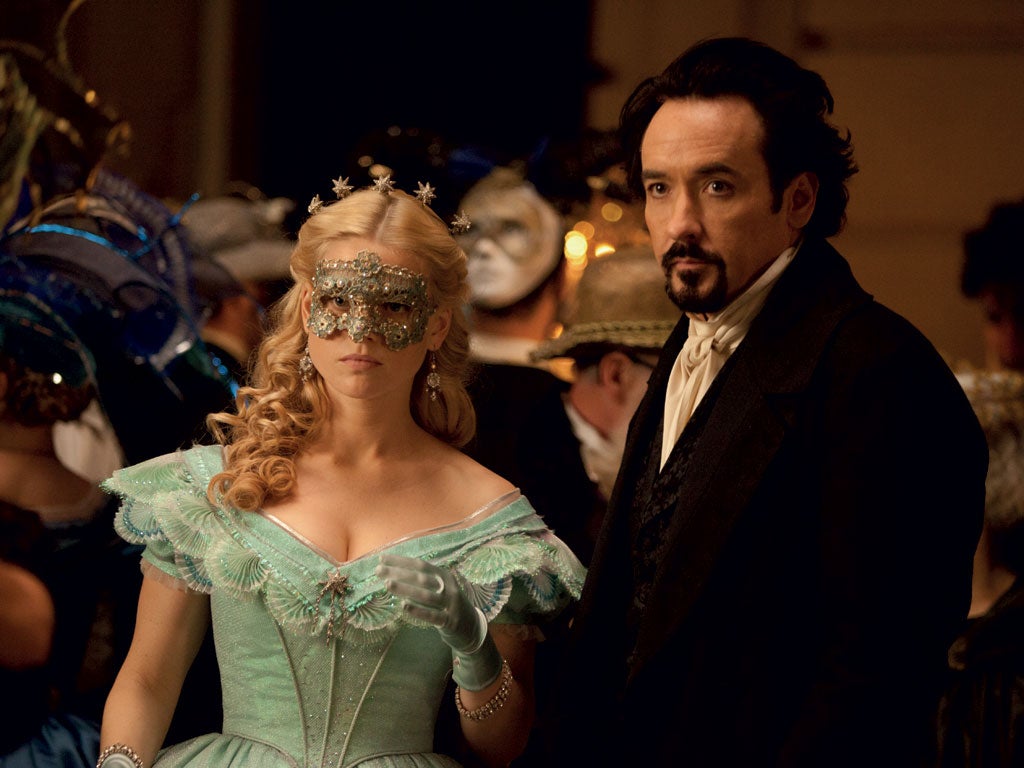The Raven, James McTeigue (15)
The portrayal of Poe as a sleuth is a real horror, but not in a good way

Your support helps us to tell the story
From reproductive rights to climate change to Big Tech, The Independent is on the ground when the story is developing. Whether it's investigating the financials of Elon Musk's pro-Trump PAC or producing our latest documentary, 'The A Word', which shines a light on the American women fighting for reproductive rights, we know how important it is to parse out the facts from the messaging.
At such a critical moment in US history, we need reporters on the ground. Your donation allows us to keep sending journalists to speak to both sides of the story.
The Independent is trusted by Americans across the entire political spectrum. And unlike many other quality news outlets, we choose not to lock Americans out of our reporting and analysis with paywalls. We believe quality journalism should be available to everyone, paid for by those who can afford it.
Your support makes all the difference.Here's a historical high-concept pitch I couldn't resist: Edgar Allan Poe plays detective. What a terrific idea, the American literary greats reinvented as sleuths: "Emily Dickinson Investigates!"; "The Crime Casebooks of Scott and Zelda Fitzgerald!" But no one's as suited to the job as the father of American literary Gothic. Poe, after all, is generally credited with inventing the whodunit in his story "The Murders in the Rue Morgue".
In The Raven, Poe (John Cusack) is consulted by the Baltimore police to solve a series of grisly murders – which should be a doddle for him, as they are inspired by his own stories. The process of deduction goes roughly like this. The killer leaves behind a mask. "Mask? Mask?" muses Poe (I'm giving you the gist, the actual dialogue is far fruitier). "Surely an allusion to 'The Masque of the Red Death'! There's a costume ball tomorrow night – we must be present, lest the killer strike again!"
The assassin works through several of Poe's greatest hits: there's a murder involving a pit and a pendulum; a bit of bricklaying, after "The Cask of Amontillado"; and Poe's apocryphal inamorata Emily (Alice Eve) is given a premature burial (in an oblong box, naturally). There's even a grisly bit of business with a quill and a severed tongue, inspired by "The Facts in the Case of M. Valdemar" – which even Poe has to admit is a bit recherché. There isn't actually a death involving a purloined letter – although you sometimes worry that the script has been mislaid.
Actually that's unfair, because the screenplay, by Hannah Shakespeare and Ben Livingston, is one of the better things here. There's much ripe dialogue, especially in the mouth of Poe, played by Cusack as a manic proto-hipster (with a snazzy goatee, rather than the real Poe's merely functional 'tache). His voice an impassioned rasp, his face usually fixed in wild-eyed bafflement, Cusack comes on like a true melodrama barnstormer – especially when ranting at all comers about his overlooked genius. Cusack and the screenwriters catch the shaky swagger of a Beat poet avant la lettre, the prototype of the American writer whose brilliance is inseparable from his alcohol intake. Like they also said about the swimmer Esther Williams: wet he's a star, dry he ain't.
Cusack's Poe also comes across as a charmer who knows how to work his literary prestige. One of the best scenes has him reciting to an audience of society ladies, and setting both fans and hearts a-flutter. At such moments, The Raven displays some wit. The premise is good, too: the real hook is less the murders themselves than the enigma of Poe's last few days. (He died in 1849, after being discovered on a bench in Baltimore in a state of derangement – which is the film's starting point.)
The rest, however, just fills in the gaps in a routine way, with routine characters: Poe's imperiled inamorata; her angry, ferociously whiskered papa (Brendan Gleeson); and a pensive policeman (Luke Evans), the rational counterpart to Poe's visionary genius. James McTeigue, who made the ambitious but messy V for Vendetta, directs this handsome but dramatically lifeless number in which gushes of scarlet occasionally liven up the oppressively sombre visuals: the costume ball is more like a Masque of the Tastefully Dark Blue Death With a Discreet Gold Trim.
You won't care a jot about the solution to the mystery, although at the end it briefly seems that the killer will embark on another spree based on the novels of Jules Verne, who didn't hit his stride till the 1860s (pardon me, but these literary romps don't work unless they're pedant-proof). Luckily, the producers realised how viewers would respond after watching The Raven: Nevermore!
Join our commenting forum
Join thought-provoking conversations, follow other Independent readers and see their replies
Comments